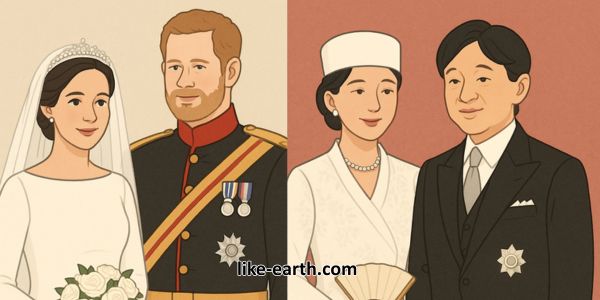Royal Marriage Rules Comparison: A Global Perspective

Royal marriage rules comparison between global monarchies continues to be a fascinating subject for history enthusiasts and modern audiences alike. While kings and queens may live in opulence, the rules that govern their private lives—especially whom they may marry—can be surprisingly strict and complex.
Introduction to Royal Matrimonial Traditions
Marriage within royal families is never just about love. It’s a matter of political alliances, religious expectations, and constitutional requirements. From Europe to Asia, these customs differ greatly. In this article, we’ll explore how these unique protocols shape royal unions and affect succession rights.
European Monarchies and Their Marriage Laws
European royal families—especially in the UK, Sweden, Spain, and the Netherlands—typically adhere to strict marital traditions. For example, British royal marriages once required parliamentary approval under the Royal Marriages Act of 1772. Though relaxed in 2013, the top six heirs still need the monarch’s consent to wed.
In Spain and Norway, marrying a commoner is now more acceptable. But the spouse must often convert to the country’s state religion or be of “royal-worthy” character. These marriages, although more flexible than before, still come with notable restrictions.
Middle Eastern Royal Protocols
Royal families in the Middle East—like those of Saudi Arabia, Jordan, and the UAE—tend to place a greater emphasis on tribal affiliations and religious qualifications. Most monarchies require that spouses be of Islamic faith and, in many cases, from a reputable or noble family within the region.
For example, Queen Rania of Jordan, while a commoner by birth, came from a respected Palestinian family. Her marriage was deemed acceptable because of her educational background, character, and regional origin.
Asian Monarchies: Japan and Beyond
The Japanese Imperial Household has some of the most rigid marriage rules. Female members lose their royal status upon marrying a commoner, as seen in the recent case of Princess Mako. Male members, however, retain their position, though the pool of acceptable partners is small due to cultural and constitutional pressures.
In contrast, monarchies in Thailand and Bhutan exhibit a blend of tradition and modern adaptation. While royalty in Thailand must marry someone of proper social standing, recent monarchs have occasionally broken tradition, sparking debate and media coverage.
Commoner Spouses and Modernization
The marriage of Prince William to Kate Middleton and Prince Harry to Meghan Markle showcased a modern shift in tradition. These unions were celebrated for reflecting a more inclusive and modern monarchy. However, these changes are often met with both praise and criticism, especially among traditionalists.
Religious Considerations in Royal Marriages
Religious requirements remain a cornerstone of many royal wedding rules. In the UK, for instance, the monarch cannot be a Catholic due to the Act of Settlement (1701). Similarly, Islamic monarchies demand adherence to Sharia principles, especially concerning lineage and conversion.
Interfaith marriages are typically not allowed or are extremely rare. These rules are not only about personal belief but also about preserving national identity and religious heritage.
Succession and Legitimacy
One of the major reasons marriage rules are strict among royal families is the issue of succession. Children born from unions outside approved guidelines may lose succession rights. This makes marriage decisions even more strategic and sensitive.
For instance, when Prince Carl Philip of Sweden married Sofia Hellqvist, a former model and reality star, there were concerns. But public acceptance and royal support allowed the marriage to proceed with official recognition.
Public Perception and Media Influence
The public plays a significant role in shaping royal marriage outcomes today. Media coverage and social media engagement can influence how these relationships are viewed. Royals who marry for love often gain public favor, which in turn pressures institutions to modernize.
This evolution shows how royal traditions are gradually adapting to societal expectations without losing their historical essence.
The Future of Royal Marriage Rules
As monarchies evolve in modern democratic societies, it’s likely that marriage rules will continue to soften. This shift is essential to maintain relevance and relatability. However, complete dissolution of traditions remains unlikely due to the symbolic power and continuity they represent.
Some monarchies may opt for hybrid models—allowing love-based marriages within limits that ensure dignity and tradition are preserved.
Conclusion
The royal marriage rules comparison between global monarchies paints a vivid picture of how culture, religion, politics, and identity intersect in royal life. Whether in Europe, the Middle East, or Asia, marriage rules continue to reflect both centuries-old customs and emerging societal values.
Understanding these nuances gives us a broader appreciation for the delicate balance royal families maintain. It also raises important questions about the future of monarchy in a fast-changing world.
Explore More
Learn more about royalty, culture, and global society at Like Earth.
Join the conversation on royal traditions via our WhatsApp Channel.



